Archived Storm Damage Blog Posts
How to Prepare Your Home for Storm Flooding
11/1/2023 (Permalink)
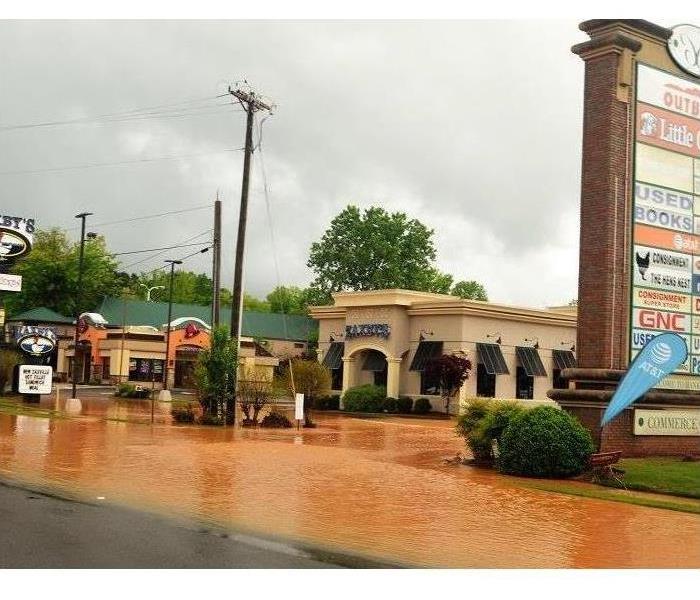 Call SERVPRO Team Lutz today 215-368-4110!
Call SERVPRO Team Lutz today 215-368-4110!
Storm flooding can cause extensive damage to your home and possessions, but with proper preparation and planning, you can significantly reduce the risk and mitigate potential losses. This blog post will guide you through the essential steps to prepare for storm flooding in your home, ensuring your safety and safeguarding your property.
Understand Your Risk: Before taking any action, it's crucial to understand the level of risk your area faces regarding storm flooding. Research local flood maps and consult your local authorities or emergency management agencies to determine the likelihood of flooding in your neighborhood. This information will help you make informed decisions about preparation.
Create an Emergency Kit: Prepare an emergency kit that includes essentials like non-perishable food, clean water, first aid supplies, flashlights, batteries, a portable radio, and important documents. Store this kit in a waterproof container that is easily accessible.
Develop a Family Emergency Plan: Discuss and establish a family emergency plan. Everyone in your household should know what to do in case of flooding, where to meet, and how to contact each other. Assign roles and responsibilities, and practice evacuation procedures.
Elevate Electrical Systems: Electrical systems, such as outlets, circuit breakers, and switches, should be raised above the expected flood level in your area. Consult with an electrician to make necessary adjustments and install Ground Fault Circuit Interrupters (GFCIs) to prevent electrical shocks.
Install Sump Pumps: A sump pump can help prevent water from accumulating in your basement. Ensure it is in good working condition and has a backup power source, such as a battery or generator, in case of power outages.
Waterproof Your Basement: Seal any cracks in your foundation and walls to prevent water from seeping in. Use waterproof paint or coatings on basement walls and floors. Consider elevating valuable items stored in your basement.
Elevate Appliances: If you live in a flood-prone area, elevate your appliances like the washer, dryer, and HVAC systems to prevent water damage. Secure them properly and consult with professionals if needed.
Install Flood Vents: Flood vents can allow water to flow in and out of your home, reducing structural damage. Consult a professional to determine the right type and placement of flood vents for your home.
Consider Flood Insurance: Regular homeowner's insurance typically does not cover flood damage. Investigate and purchase flood insurance through the National Flood Insurance Program (NFIP) or private insurers. Remember that there may be a waiting period before it takes effect.
Secure Outdoor Items: Before a storm, bring in or secure outdoor furniture, grills, and other items that could become projectiles during high winds. Clear gutters and downspouts to ensure proper drainage.
Create a Home Inventory: Compile a list of your possessions, including photos and descriptions. Store this inventory in a safe place, such as a waterproof container or cloud storage. It will be valuable for insurance claims.
Stay Informed: Keep yourself updated with the latest weather forecasts and warnings. Sign up for emergency alerts from local authorities and have a weather radio on hand to receive information during power outages.
Preparing for storm flooding in your home is a proactive step in safeguarding your family and property. By understanding your risk, planning ahead, and implementing preventive measures, you can significantly reduce the impact of flooding and make the recovery process smoother. Remember to stay vigilant and adapt your preparations as needed to address your specific circumstances and location.
SERVPRO Team Lutz is there to help you in your time of need. Call our office at 215.368.4110. There is someone waiting to help you 24/7.
What to do after a storm
7/3/2023 (Permalink)
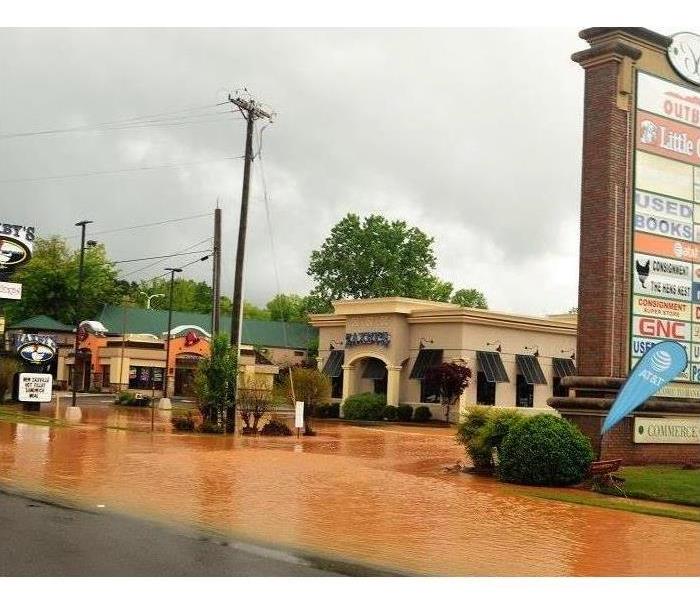 Call SERVPRO Team Lutz today with all your restoration needs at 215.368.4110!!!!
Call SERVPRO Team Lutz today with all your restoration needs at 215.368.4110!!!!
Preparing for SERVPRO Team Lutz after a storm can help streamline the process and ensure a quicker recovery. Here are some of the best ways to prepare:
Contact your insurance company: Notify your insurance provider immediately after the storm to initiate the claims process. Understand your policy coverage and any specific requirements or documentation needed.
Document the damage: Take detailed photographs and videos of the damage caused by the storm. This documentation will serve as evidence for your insurance claim and help the restoration company understand the extent of the damage.
Ensure safety: Safety should be your top priority. Assess your property for any potential hazards, such as downed power lines, gas leaks, or structural damage. If you identify any hazards, evacuate the area and contact the appropriate authorities.
Secure the property: If possible, take steps to secure your property to prevent further damage. Cover broken windows with plastic sheets or boards, tarp roofs to prevent water intrusion, and secure any vulnerable areas.
Gather important documents: Collect important documents like insurance policies, identification, and any relevant contact information. Keep these documents in a safe, easily accessible place, so you can provide them to the restoration company or your insurance company when needed.
Make a list of damaged items: Create an inventory of damaged items, including their approximate value, make, model, and age. This will help during the claims process and ensure you receive adequate compensation for your losses.
Take preventive measures: Before the storm, consider taking preventive measures such as trimming trees near your property, reinforcing windows, and securing outdoor furniture and equipment. These precautions can minimize potential damage.
Communicate with SERVPRO Team Lutz: Establish clear communication. Provide us necessary information, including insurance details, claim numbers, and preferred points of contact. Ensure we are aware of any specific requirements or concerns you may have.
Follow safety guidelines: During the restoration process, adhere to all safety guidelines provided by the restoration company. This may include staying out of certain areas, wearing protective gear, or temporarily relocating while work is being done.
Remember, every storm situation is unique, so it's crucial to consult with the professionals of SERVPRO Team Lutz and follow their guidance throughout the restoration process.
How to Prevent Flood Damage in Your Business
6/1/2023 (Permalink)
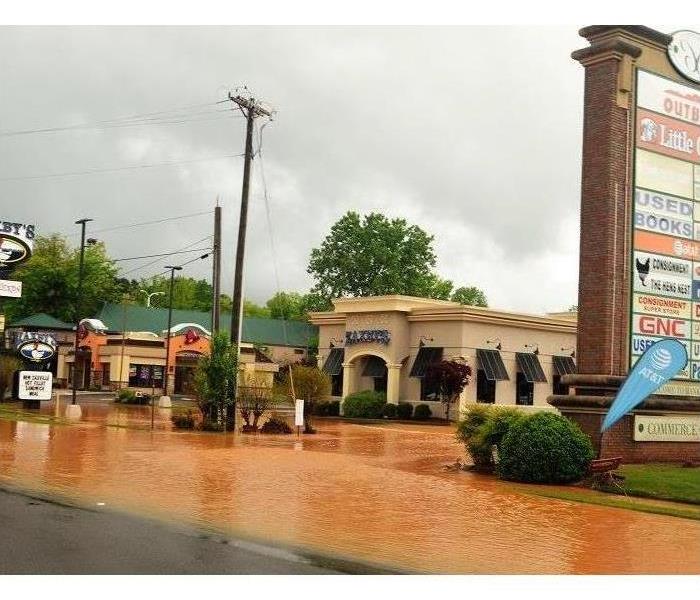 Call SERVPRO Team Lutz at 215.368.4110!!
Call SERVPRO Team Lutz at 215.368.4110!!
Preventing flood damage in your business is crucial to safeguard your property, assets, and operations. While it's impossible to eliminate the risk entirely, here are some measures you can take to minimize the potential for flood damage:
Understand Your Property's Vulnerabilities: Assess your business property to identify areas prone to flooding. Look for signs of poor drainage, cracks in the foundation, or areas where water can accumulate. Understanding these vulnerabilities will help you develop a targeted prevention plan.
Maintain Proper Drainage Systems: Ensure that your property's drainage systems, including gutters, downspouts, and drains, are clear of debris and functioning effectively. Regularly clean and inspect them to prevent blockages and ensure water flows away from your building.
Install Flood Barriers and Sealing Systems: Consider installing flood barriers or flood-resistant seals around doorways, windows, and other vulnerable openings. These barriers can help prevent water intrusion during flooding events.
Elevate Equipment and Utilities: Keep electrical panels, heating systems, and other critical equipment elevated above ground level. If possible, relocate them to higher floors or install them on raised platforms to minimize potential damage from floodwaters.
Waterproof Basement Areas: If your business has a basement, ensure it is properly waterproofed. Use waterproof coatings on walls and floors, install sump pumps to drain excess water, and consider adding a backup power source to keep the pumps operational during power outages.
Implement a Flood Emergency Plan: Develop a comprehensive flood emergency plan that includes evacuation routes, emergency contacts, and procedures for shutting off utilities. Train your employees on the plan and conduct regular drills to ensure everyone is prepared in case of a flood.
Secure Important Documents and Data: Store important documents, contracts, and sensitive data in waterproof containers or off-site in digital formats. This will help protect critical information from water damage and allow for easier recovery in case of a flood.
Regular Maintenance and Inspections: Conduct routine inspections of your property, including roofs, walls, and plumbing systems. Address any issues promptly, such as roof leaks or pipe leaks, to prevent water damage before it becomes a major problem.
Obtain Flood Insurance: Consult with your insurance provider to determine if your business is located in a flood-prone area and if you should invest in flood insurance. This coverage can provide financial protection and help you recover quickly in the event of flood damage.
Remember, proactive prevention is key to minimizing flood damage. By implementing these measures and staying prepared, you can significantly reduce the risk of flood-related disruptions to your business.
5 Ways to Use Landscaping To Protect Your Home
11/1/2022 (Permalink)
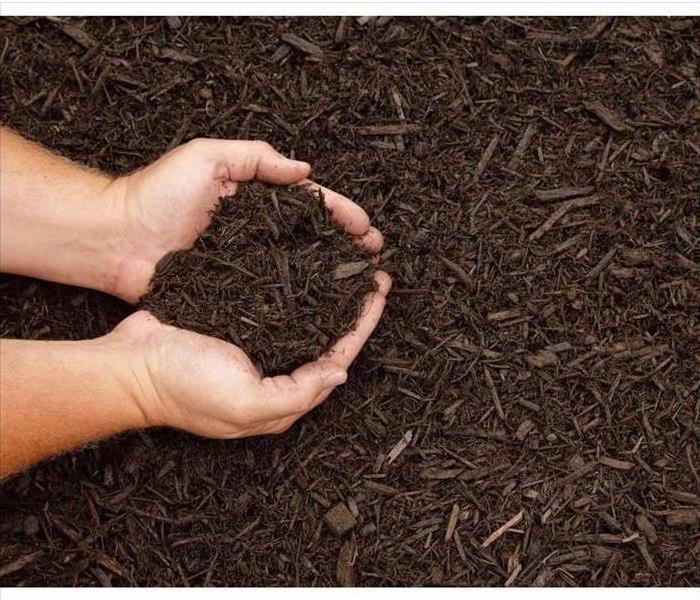 You can use mulch to protect your home during a rainstorm.
You can use mulch to protect your home during a rainstorm.
During a big storm in our area, you take precautions to protect your home. You board up windows and place sandbags to divert water flow. Did you know that you can use your landscaping to protect your yard from outside flooding? Here are five ways to do it.
1. Extend Rain Spouts
The downspouts on your home are supposed to help move water away from your foundation, but only when they're correctly installed. Many rain spouts are too short, so rainwater pools next to the foundation. Extend rain spouts further into the yard to prevent flooding.
2. Choose Heavy Mulch
You can choose many types of mulch based on appearance or price. You can use mulch to protect your home during a rainstorm. Heavy mulch such as shredded bark won't float away but will help the soil absorb excess water and keep it away from your home.
3. Plant a Rain Garden
A rain garden can be planted on a slope and helps to absorb excess water. You can divert rainspouts into a rain garden which protects your house and keeps your home beautiful.
4. Research Native Plants
The most effective way to plant a rain garden is to use native plants. Native plants thrive in your yard, develop deep roots, and help prevent soil erosion. If outside flooding has become a problem at your home, a storm restoration company can make helpful suggestions to prevent future flooding.
5. Level Your Yard for Rain Drainage
A more intense intervention is to correct the slope of your yard. If the ground slopes even slightly toward your foundation, you are more likely to have inside flooding during a storm. You can work with a professional landscaper to correct the slope and help water flow away from your home.
Outside flooding during a storm can cause inside damage. Use landscaping strategies to protect your yard and home from water damage.
Staying Safe After a Flood
10/4/2022 (Permalink)
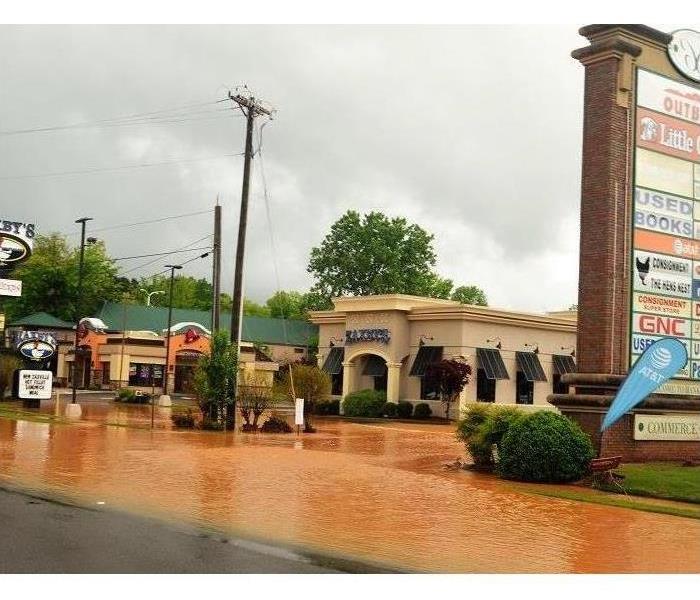 Call us 24/7 at 215.368.4110!
Call us 24/7 at 215.368.4110!
Flooding occurs when water overflows from a few inches deep to completely engulfing entire buildings. Flooding can happen when rivers and lakes can't handle too much rain or snowmelt or when rain can't be absorbed completely.
It's critical to know the difference between watching and a warning to know what to do to stay safe.
Flood Watch or Flash Flood Watch
Flooding or flash flooding in your area is possible. Pay attention to changing weather and flood conditions, and be prepared to move to higher ground.
Flood Warning
Flooding is occurring or is about to happen. Avoid low-lying areas and, if necessary, evacuate.
Flash Flood Warning
If a flash flood is occurring or is about to happen, seek higher ground immediately.
Be prepared!
It is essential to be prepared for unpredictable weather. Here are a few to stay safe after a flood:
- Return only when the authorities indicate it is safe to do so.
- Except in an emergency, avoid driving.
- When cleaning mold or other debris, wear thick work gloves, protective gear, and boots, and use suitable face coverings or masks.
- Be careful that there could be snakes or other animals in your home.
- Be cautious of the possibility of electrocution. If you are standing in water, if the equipment is wet, do not touch it. If it is safe, turn off the electrical to avoid a shock.
- Floodwater can be contaminated or charged with electricity from downed power lines, so avoid wading in it.
- Only use a generator or other gasoline-powered gear outside and away from windows.
SERVPRO of Lansdale, Warminster, Blue Bell, and Abington Jenkintown can respond immediately to storm and flooding conditions and is available 24 hours a day – Call us today at 215.368.4110.
Spring Thunderstorm Preparation
7/1/2022 (Permalink)
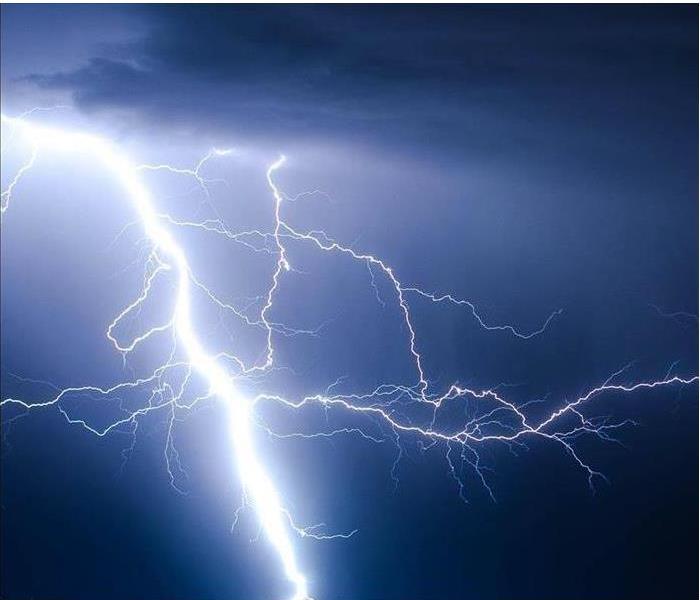 The American Red Cross reports that lightning causes more deaths than tornadoes and hurricanes.
The American Red Cross reports that lightning causes more deaths than tornadoes and hurricanes.
While thunderstorms can vary in length and severity, every storm has the capability of leaving a path of destruction, which can present safety risks to homes and businesses. Examples of the dangerous consequences of thunderstorms include downpours, hail, high winds, flash flooding, and downed trees and powerlines. The American Red Cross reports that lightning causes more deaths than tornadoes and hurricanes. With all this said, thunderstorm preparation is imperative in order to make sure that your residential property is ready for anything this spring. Continue reading to learn more about the steps that you can take to prevent storm damage from thunderstorms:
3 Thunderstorm Safety Tips
If you check out the Red Cross’ website, you’ll find full lists of safety tips for before, during, and after thunderstorms. In this blog, we’d like to highlight three of their tips that can help prevent storm damage. Firstly, because objects outside can be raised off of the ground by strong winds and function as projectiles, it is beneficial to devise a list of outdoor objects that can be brought inside before a thunderstorm. In order to protect your home from flying debris, make sure that your property’s doors and windows are sealed shut before the storm. Installing storm shutters over windows can also be helpful in avoiding unwanted damage. The final tip is to make an attempt to cut back tree branches and shrubbery before thunderstorms roll through your area this spring. Doing so can prevent branches from falling and coming into contact with your residence.
Call SERVPRO for Expert Storm Damage Restoration
The three aforementioned tips from the Red Cross can decrease your chances of experiencing storm damage this spring, but there is always a risk with every storm. Weather events are out of our control but, all the while, you can always rely on SERVPRO Disaster Recovery Team - Team Wall to be there if the unthinkable happens. No matter where your property is located or how extensive the damage may be- we can handle it all. Trust our professional 24-Hour Emergency services to provide you with the quickest solution possible and make it “Like it never even happened.” You can also find more information about our many services, like our residential Storm Damage Restoration and Commercial Storm Damage Restoration, and the larger SERVPRO Disaster Recovery Team by visiting our website.
What To Do After a Storm Has Passed
6/1/2022 (Permalink)
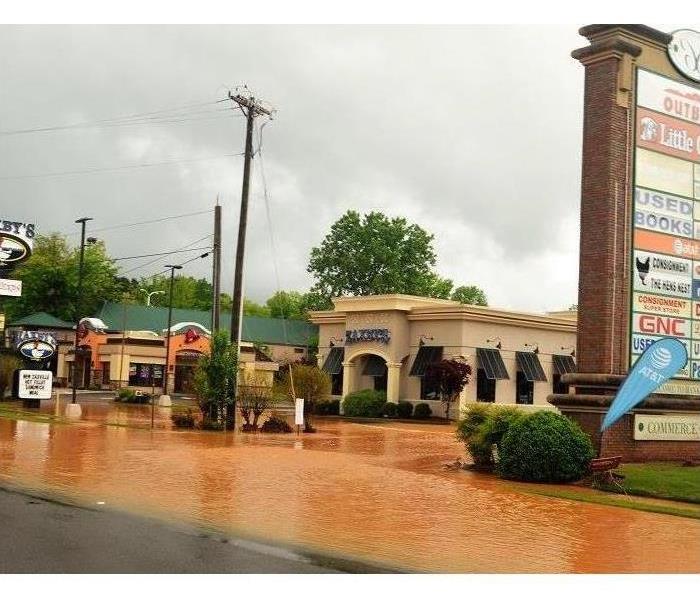 Call us at 215.368.4110!
Call us at 215.368.4110!
Even after the hurricane or storm has passed, its aftermath remains. During seasonal storms, high-speed winds remove materials off of your home causing flying debris, and heavy rainstorms could lead to flooding and water damage. Before leaving the safety and doing anything, you want to ensure that the storm has fully passed. Since the eye of the storm is calm and can span over miles, wait for official confirmation that the storm has fully passed before leaving your safe, interior room.
After bad weather subsides, you'll want to bring your home back to its former condition as soon as possible. Regardless of the type of damage your property is facing, time is of the essence. The quicker the restoration process is able to begin, the quicker your home will be brought back to normal, lessening the impact to both you and your wallet. Below are a few tasks you can perform immediately to begin the storm damage restoration process:
What Should You Do After a Storm?
1. Check Your Home for Damage
After the storm has passed, you should check your home and property to learn the extent of the damage, as not all of it will be immediately obvious. Possible damages could be:
- Holes in the roof
- Split seams
- Missing, broken, or dented shingles
- Granules collecting in gutters or downspouts
- Leaks in your roof or ceiling
- Dents on vents, gutters, or flashing
- Cracked windows or broken window panes
2. Contact Your Insurer
Homeowners' insurance policies typically cover repair costs for fallen trees, wind, hail, and water damage caused by storms, so call your insurer to let them know exactly what happened. You'll need to provide the policy number so be sure to have the paperwork on hand. Once you have filed a claim, an insurance adjuster will be scheduled to come out and visit the property and assess the scope of the damage.
3. Take Pictures of the Damage
If possible, go through the property and take pictures of any broken windows, standing water, and any other issues that have been caused by the storm. Make note of any missing siding, toppled trees, and any other exterior damage. Include images of the home prior to the storm damages for comparison, this could also be used to calculate how much money you will need for the storm damage restoration.
3. Secure the Property
Emergency service providers can put tarps on the roof to prevent water infiltration and fallen trees from your property. Board up windows to prevent water and pests from getting inside, and remove any debris in the yard that could be potential tripping hazards.
4. Avoid Additional Home Damage Where Possible
When it is time to start fixing your home, there may be some areas that you can handle yourself, if you can properly repair some damage you should begin immediately as you also seek professional help for the additional areas. Immediate repairs can help to prevent more damage, so acting quickly is key.
SERVPRO of Warminster, Lansdale, Blue Bell and Abington Jenkintown is here to help and ready to respond to your storm damage restoration needs. If your home is damaged during a storm, our highly trained technicians will return your home to pre-storm condition and make it "Like it never even happened." Call us at 215.368.4110.
What Can I Expect During Storm Damage Restoration?
4/5/2022 (Permalink)
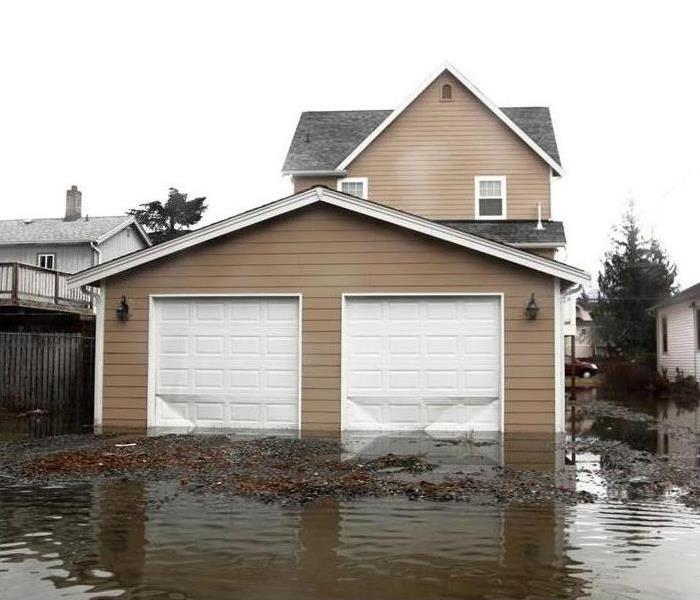 Be ready for Storm Damage Restoration by following these tips. If any doubt arises, just contact us.
Be ready for Storm Damage Restoration by following these tips. If any doubt arises, just contact us.
A heavy rainstorm in our area, can quickly wreak havoc on your home. Blowing wind and flooding water are often the main concerns during a storm and tend to cause the most destruction. As a result, wind and rain can lead to roof damage requiring a temporary tarp, water damage requiring tear out, and various other remediation strategies. You must take fast action to minimize loss. This usually involves:
- Notifying your insurance company
- Documenting the damage in detail
- Mitigating damage until restoration can begin
- Calling professionals for cleanup and repair
Once the professionals arrive on the scene, you will be on the road to restoration. Depending on the amount and type of damage sustained, techniques can vary, but you can typically expect some particular aspects as a rule.
Professional Restoration Procedures
When you hire storm restoration experts, they will usually go through standard procedures for water cleanup. You will notice the technicians:
1. Wearing Personal Protective Equipment
Your remediation team will wear personal protective gear for their own safety and prevent cross-contamination to unaffected areas of the house. They will generally wear head coverings, safety glasses, respirators, water-proof coveralls, water-proof gloves, and water-proof shoe coverings or boots.
2. Extracting Standing Water
The team will extract all of the standing water and some of the debris using industrial-grade pumps. This is a quick, efficient method of removing the water to begin the subsequent phases of the restoration.
3. Tearing Out Wet Materials
Everything will probably have to be removed from the affected area. Clearing the space of furniture and other contents will provide more room to work and will make it easier to clean and dry. It will also make it easier to sort out what's salvageable from what's not. This process will include the tear out of wet materials, which often includes carpet, carpet padding, portions of the drywall and sometimes part of the subfloor.
4. Cleaning and Sanitizing
Then, it's time to clean and sanitize the affected area and all of the salvageable contents. If it's not cleaned and sanitized thoroughly, you run the risk of growing bacteria and mold, both of which can be damaging to people, possessions, and even a house's structure.
5. Drying the Contents and Structure
In addition to a thorough cleaning, everything also needs to be dried completely. Even if it's adequately cleaned but left damp, mold spores are virtually everywhere, so mold can begin growing within 24 hours. If the mold gets out of control, it could turn into a worse problem than the water damage itself. Your restoration team will likely use industrial-grade fans, dehumidifiers and heat sources to promote drying.
Next time a strong storm hits your home, you will understand better what actions to take if damage occurs. You will also have a better idea of what to expect from the cleanup crew. Depending on the extent of the loss, it could take a day of work if it requires minor restoration. However, restoration could last several months if there is a lot of damage requiring tear out and structural repair. Either way, they'll make sure they return your home to its previous condition.
How To Successfully Navigate Your Flood Insurance Claim
4/5/2022 (Permalink)
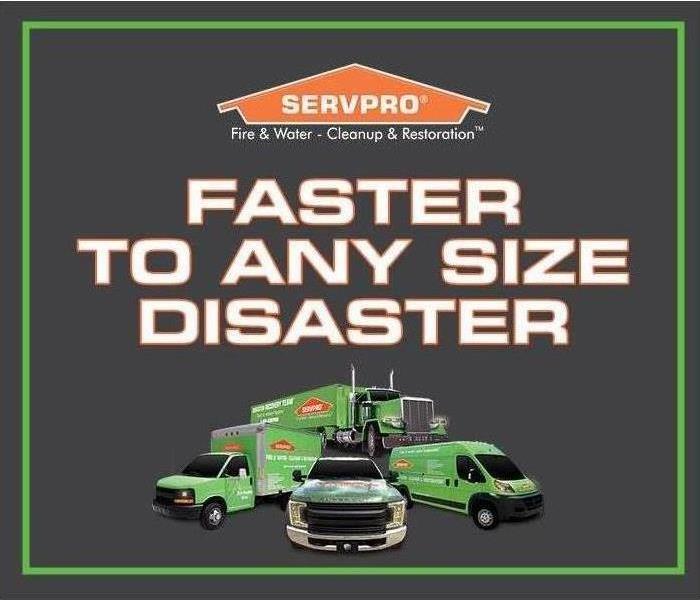 After flood damage in your home, contact a professional to know what to do.
After flood damage in your home, contact a professional to know what to do.
When home has been affected by flood damage, knowing which steps to take and how to prioritize those actions can be crucial. Along the way, you'll deal with many professionals who are involved in the recovery process:
- Insurance agents
- Adjusters
- Building inspectors
- Cleanup and recovery technicians
Each step of the recovery process will proceed more smoothly as you communicate and coordinate well with these service providers, especially if you fully understand your flood insurance coverage.
Working With Flood Insurance Professionals While Representing Yourself
It's important to remember that the main priority of some of these professionals, such as insurance agents and adjusters, is to keep their costs low. When it comes to making sure that quality services, procedures, and goods are being used, you are the primary person responsible.
Tips for Working With Your Insurance Agent
You may receive advice telling you to wait to make repairs until after an insurance representative or adjuster visits your property. This is a tough situation because the insurance company may give you trouble for taking action before inspections. However, it doesn't take long for water damage to get worse, increasing the costs of cleanup and repairs.
- Take action immediately. Contact your insurance company right away, request a certified copy of your flood insurance policy, and ask about the best way to submit proof of loss.
- Keep a detailed, written record of every conversation you have with the insurance company. Your record should include the date, the time, names of the people you talked to, and the gist of the conversation.
- Reach out to third-party professionals for damage estimates. It's best to have at least three to be sure you get enough money for the necessary repairs.
- Document everything before beginning any cleanup efforts. Take pictures and videos of all damage, keep receipts, and write up any explanations.
- Hold onto damaged items to show the insurance company.
Tips for Working With Adjusters
The insurance adjuster works on behalf of the insurance company and will be looking for ways to keep your claim low. Adjusters are also very busy, so you may have a long wait until the professional shows up. You may have better success if you hire a public adjuster to represent you as you work with professionals from your insurance company.
- Save copies of the pictures, videos, and written descriptions to share with adjusters.
- Provide pictures of your home before the damage happened.
- Contact a realtor for a copy of the most current property inspector's appraisal and findings.
- Obtain appraisals from your mortgage provider and other lenders.
- Start preparing an itemized list of everything in your home that was damaged, including items such as toiletries. Include detailed descriptions, brand names, costs, and whether you have receipts.
It may not be wise to start repairs before you have a go-ahead from the insurance company, but you can take emergency and mitigation steps. These include hiring an emergency cleanup and mitigation company to remove standing water, move soaked materials to a dry place, and board up doors and windows. These services that prevent mold damage and other secondary harm may well be covered by your flood insurance policy.
Understanding a Flood Cut
11/9/2021 (Permalink)
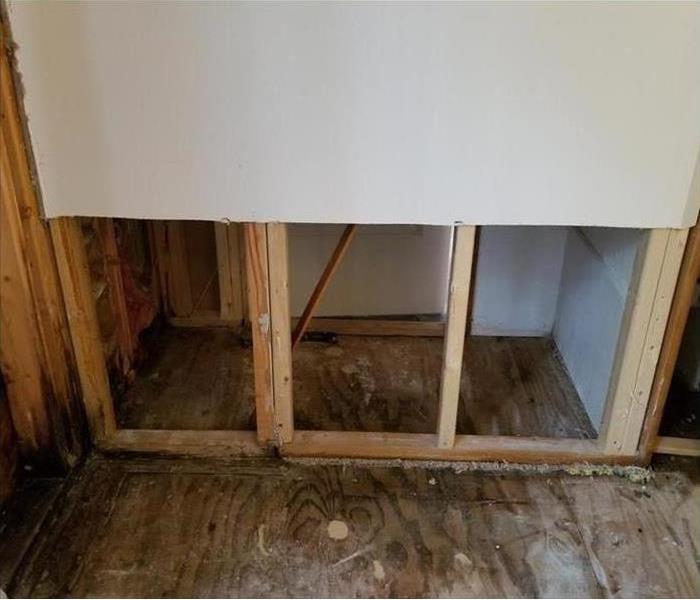 Call us when you have a flood emergency! 215.368.4110
Call us when you have a flood emergency! 215.368.4110
Unless you have experienced past house flooding or are an experienced home renovator, there is a good chance that you do not have the phrase “flood cut” in your vocabulary. For the typical homeowner, many questions come to mind when the water restoration specialist uses this expression after assessing the storm damage in your home.
What Does “Flood Cut” Mean?
• A flood cut refers to the removal of drywall from the bottom portion of the rooms in your home that experienced water damage.
• Typically, this cut is made between 12 – 18 inches above where the water damage stopped.
• The restoration specialists then tear out the drywall below the flood cut line.
When Is a Flood Cut Necessary?
• After flooding, the excess water is removed from your house. However, there may be moisture behind the walls and the drywall may be damaged. Removal of the bottom portion of the wall allows the contractors access to the interior structures of your home.
• If there is contamination in the water that touches the drywall, such as from sewage backup, all affected walls require removal to prevent the spread of bacteria.
• When insulation is present behind water-damaged walls, it is necessary to remove the drywall because insulation cannot be properly dried out or replaced with the wall intact.
How Does a Flood Cut Work?
• Restoration contractors begin the flood cut process soon after water removal to prevent the formation and spread of mold, which can occur within 24 – 48 hours.
• The flood cut line is measured and determined before a laser level marks the wall. A tarp is placed to catch the debris, and the cut is made.
• Once the restoration specialists inspect behind the drywall, another cut may be needed if the damage is larger than expected.
• Damaged materials are removed and adequate ventilation is put in place.
By knowing the meaning of “flood cut”, you are one step closer to understanding the terminology used in your home’s recovery from flooding in our area.
Three Things You Should Know if Your Building is Damaged By Flood Water
10/5/2021 (Permalink)
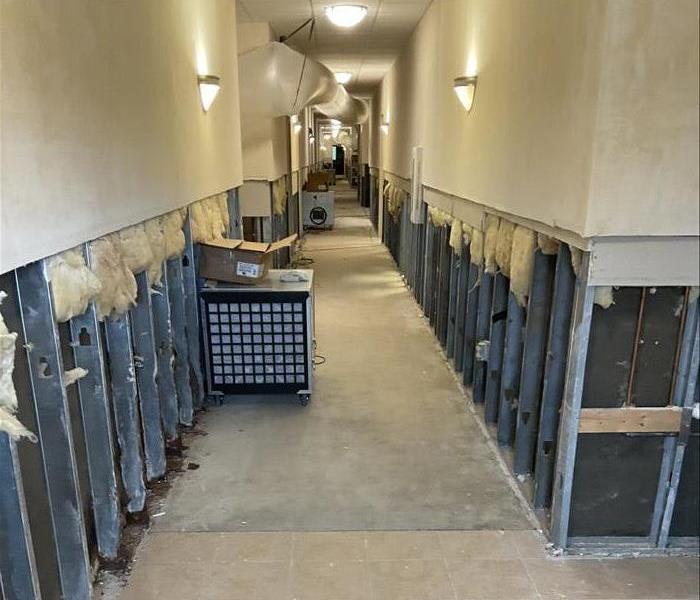 Call us at 215.368.4110 to help with your flood damage!
Call us at 215.368.4110 to help with your flood damage!
During a storm in the Philadelphia area, it is possible that your building may be damaged by flood water if the weather becomes severe. Because this is not quite the same as other water damage, you may be unsure of how to deal with it. The following is some information about this type of water that might be helpful to you.
1. Why is a Flood Different From Other Water Damage?
The reason that flood water is different from others is largely due to how it accumulates. While most water damage, such as that from leaks or broken pipes, comes from above, the water in a flood rises from the ground. As it does, it becomes category 3 water.
2. What is Category 3 Water?
When it comes to water contamination, there are three categories. Category 3 or black water, which includes water from a flood, has the highest levels of contamination. Because this water comes up from the ground, it mixes with dirt, debris and sewage. When this happens, it begins to carry waste, bacteria and harmful chemicals that can be hazardous to your health.
3. How Should You Handle It?
Because flood water is highly contaminated, it is not a good idea to try removing it on your own. Instead, you should hire a professional to thoroughly clean and sanitize the building. Any food or beverages that have been in contact with this water should be thrown away as they are no longer safe to consume. Protective gear should be worn at all times while handling category 3 water.
If your building has been affected by water or storm damage of any kind, you should have it taken care of right away to prevent it from becoming worse. If allowed to sit, moisture can contribute to mold growth and can cause materials to weaken. A professional cleanup and restoration company can sanitize the area, perform necessary repairs and salvage many affected items.
There Is No One Better To Contact After A Disastrous Storm
7/12/2021 (Permalink)
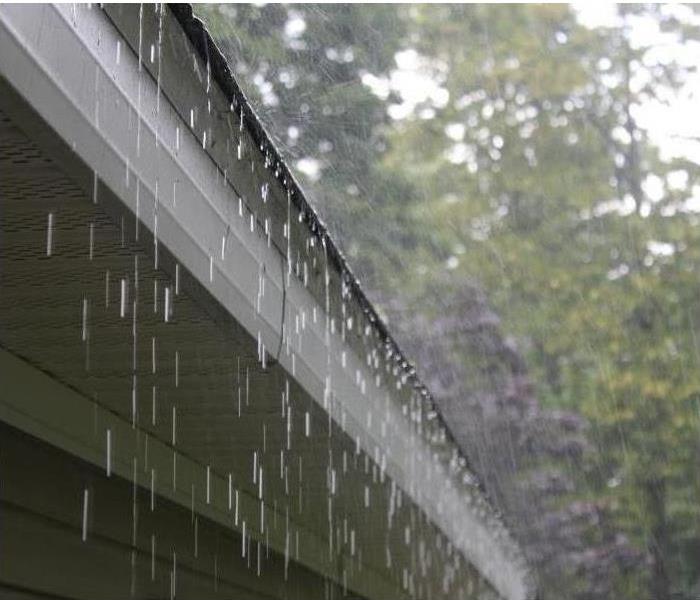 Contact SERVPRO at 215.368.4110 today!
Contact SERVPRO at 215.368.4110 today!
Unexpected emergencies like severe weather call for immediate action. SERVPRO knows immediate reaction to the disaster is important to helping you get your life back to normal.
Utilizing our 1-4-8 Service Response Guidelines, SERVPRO strives to:
* Contact you within 1 hour from notice of loss to arrange for your service
* Be onsite to begin mitigation services within 4 hours of notification.
* Provide verbal briefing of scope to you within 8 business hours of on-site arrival.
SERVPRO can also perform pack-out services, which is removing salvageable personal property from the affected area for off-site cleaning and storage.
Since we are locally owned and operated, we can respond quicker with the right resources, which is extremely important. A fast response lessens the damage, limits further damage, and reduces the restoration cost. We are available 24 hours a day, 7days a week.
When storms hit we can scale our resources to handle a large storm or flooring disaster. We can access equipment and personnel from a network of 1800 Franchises across the country and Elite Disaster Recovery Teams that are strategically located throughout the United States.
Call us today! 215.368.4110
3 Reasons to Avoid Driving During a Flood
6/3/2021 (Permalink)
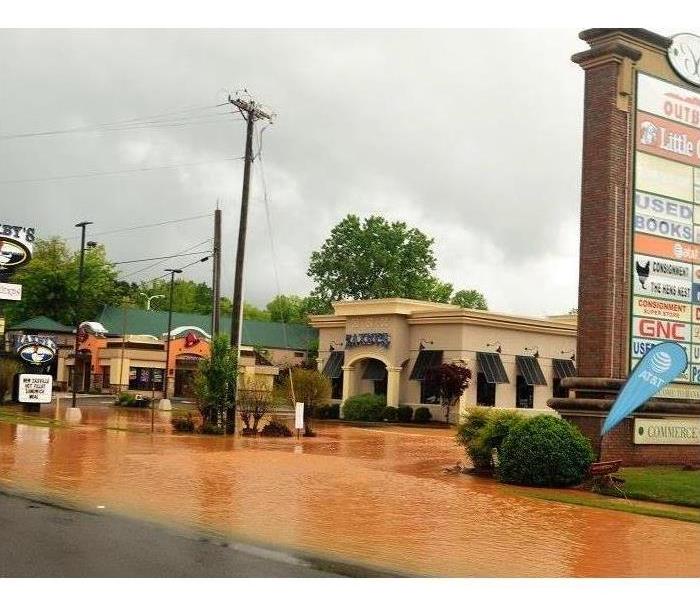 Call us at 215.368.4110!
Call us at 215.368.4110!
It can be frustrating to be stuck inside your house when it’s flooding but it is important that you avoid driving in this situation. A flooded street may seem easy to handle, but it can be a risk to your safety. The following are just a few reasons why it is best to stay off the roads during a severe storm.
1. It can damage your vehicle
One reason to avoid flooded roads is that it can cause serious damage to your vehicle. Your car is not made to be driven in water, so it does not have the necessary equipment to protect it. If water enters your engine, it can cause it to stop functioning correctly and leave you with massive repair bills. Areas of your car may rust, and electronic components can be ruined.
2. There may be hidden road damage
Even if you think the road looks safe, there might be something lurking beneath the water’s surface. A flooded street may be hiding potholes, tree branches and debris from the storm. Any of these could damage your car and make it more difficult for you to drive safely.
3. You could lose control of your car
Whether you have been driving for a few years or a few decades, you cannot be prepared for everything. Even a long history of driving experience is not enough to keep you safe during a flood. Moving water in a flooded street can easily sweep your car away and create an incredibly dangerous situation. Just a few inches of water can cause you to hydroplane and result in a crash.
One of the best travel tips for driving during a flood is simply not to do it. Stay put if possible and, once the water has receded, you can find a more comfortable place to stay while an emergency restoration company performs any necessary repairs on your damaged home.
What's an ERP?
4/20/2021 (Permalink)
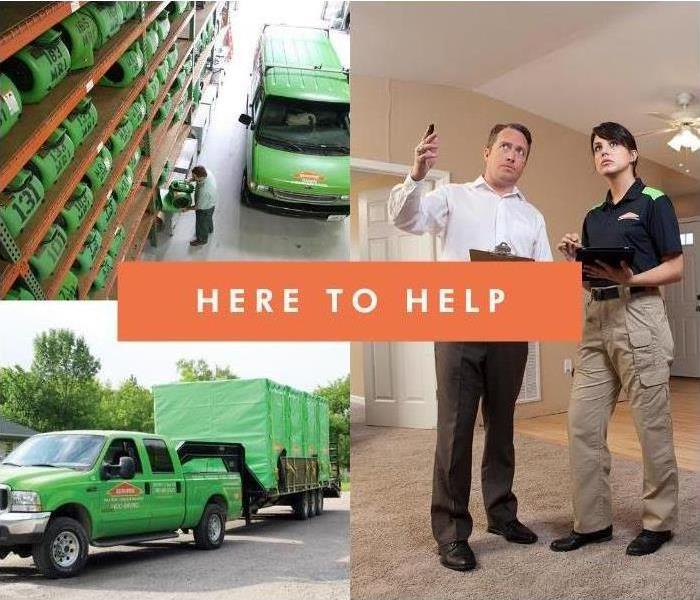 Call us at 215.368.4110 to start your ERP today!
Call us at 215.368.4110 to start your ERP today!
Are you familiar with the SERVPRO Emergency READY Profile (ERP)? This tool can make one very important part of your facility management responsibilities easier.
Every facility manager knows they should have a detailed disaster plan, but coming up with one from scratch can be a time-consuming task. It’s tempting to put this job to the side and deal with the many metaphorical fires you have to deal with every day than prepare for a real, but hypothetical fire in the future.
That’s what’s great about the ERP. One of SERVPRO of Lansdale, Warminster, Blue Bell, and Abington Jenkintown representatives can come to you and walk you through creating a reference document that details the important building and contact information for your property.
The ERP can be used as a standalone document or as a supplement to any existing preparedness plan. Thinking through what to do and who to call in advance is the key to timely mitigation, which minimizes the effects of any weather-related disaster, water, or fire damage to your business.
No matter where you live, it is important to be informed and prepared for any disaster that may occur. Though Mother Nature's is often unpredictable, the ERP is one thing we can do to help you take control before disaster strikes.
Contact SERVPRO of Lansdale, Warminster, Blue Bell and Abington Jenkintown to establish an Emergency READY Profile (ERP) for your property. SERVPRO's ERP serves as a quick reference document, In any emergency, make sure you have experienced professionals on the line. No matter how big or small, SERVPRO will be ready to help make your property damage "Like it never even happened."
Clean Out Those Gutters!
4/7/2021 (Permalink)
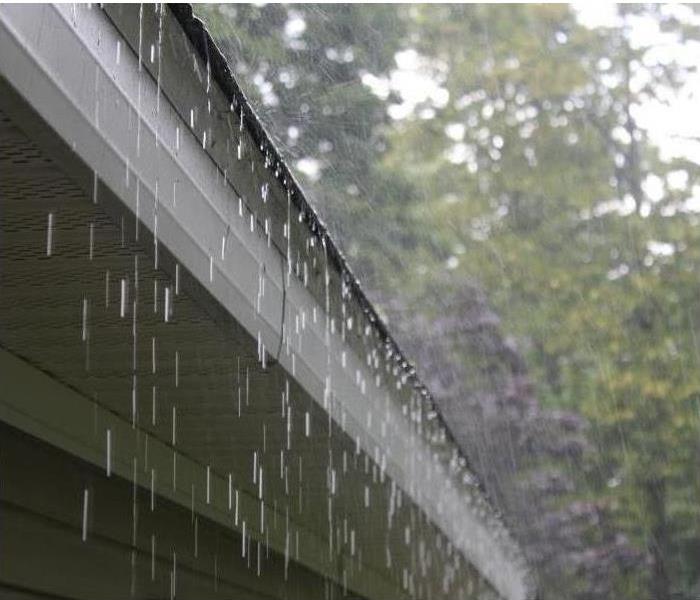 Remember to regularly clean out and inspect your gutters to avoid water damage to the structure and roof of your house.
Remember to regularly clean out and inspect your gutters to avoid water damage to the structure and roof of your house.
Think back to the last time it stormed…was water pouring off the edges of your house in bucket loads? If so, it is likely your gutters are clogged with debris.
Summer rains can bring high damaging winds that can dislodge branches from trees which may look to find a new home...on top of yours! Helicopters fall from maple trees, leaves, and tiny critters may all find a new home in your gutters.
It is important for you to regularly clean out and inspect your gutters to avoid water damage to the structure and roof of your house. It is simple enough - all you will need is a ladder, gloves, protective goggles, water hose and a scoop or small shovel.
Cleaning your gutters can be performed in 3 easy steps:
- Climb the ladder and start scooping! Start from the end closest to the drain outlet and remove any debris with your scoop, working away from the drain outlet. For faster cleanup in the end, toss the debris into a bucket on the ground.
- With your water hose in tow, spray a steady stream of water through the gutters towards the drain outlet. To avoid getting sprayed with hose water and debris, a hose with a pressure gauge for high and low power might be better, but any hose will work fine.
- Check your drainpipes for any blockages. Hopefully, any potential blocks are minimized by scooping out the debris before it makes it into the pipes. However, there are instances where storms force material into the pipes. If you see a trickle instead of a flow coming from your pipes, use the hose at the top of the gutter and spray directly into the outlet.
If you need help with storm or water damage, do not hesitate to call SERVPRO of Lansdale, Warminster, Blue Bell and Abington Jenkintown at 215.368.4110.
6 Steps to Your Water Damage
10/1/2020 (Permalink)
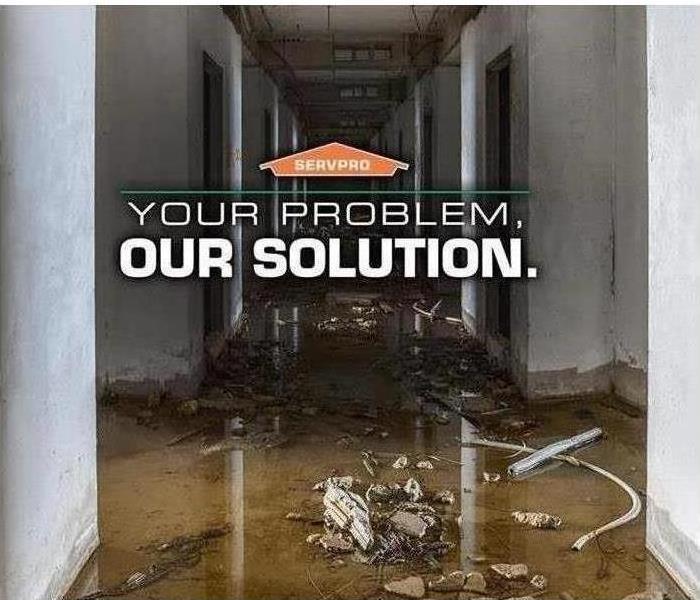 Your problem our solution. Call SERVPRO, faster to any size disaster!
Your problem our solution. Call SERVPRO, faster to any size disaster!
When your property incurs water damage, acting quickly is important
When you discover water damage, you can count on SERVPRO of Lansdale, Warminster, Blue Bell and Abington Jenkintown's, six-step restoration process to truly restore your property to its pre-damage condition.
6 Steps to Water Damage Restoration
- Initial Emergency Contact
- You can call us 24 hours a day to begin the water restoration process because taking immediate action is crucial after water damage occurs. When you call us, we will ask you questions to get an overview of the damage and to help us determine what resources to dispatch to you.
- Inspection and Damage Assessment
- When we arrive on the scene in response to water damage, we will do a detailed property inspection to assess the scope of the damage and to develop a thorough plan of action. We will identify the water source, the category of water, and check for safety concerns.
- Moisture Extraction
- The water extraction process will remove the majority of moisture via our extraction and pump units. We will start this process as quickly as possible to lessen the likelihood of more damage occurring and to reduce drying time. We can also help you move out of your belongings in the event that they might be damaged as well.
- Dehumidifying and Drying
- After the excess water has been removed, we can begin fully drying all porous materials that have absorbed water. Our industrial-grade equipment moves air quickly and helps moisture to evaporate as fast as possible, which will dry out floors, walls, and carpets as well as discourage mold growth.
- Cleaning and Repair
- After sustaining water damage, impacted surfaces will typically require professional cleaning. In addition to structural cleaning, we will clean your belongings that are able to be restored. We will also do odor removal to prevent the musty odor that water-damaged objects often develop.
- Restoration
- The final step is ensuring that your property is restored to its pre-water condition. This will involve things like drywall and flooring repairs or even reconstruction. By working with us, you are working with a company that can handle all elements of the restoration, including the difficult reconstruction parts that truly restores things back to their pre-damaged state. We also handle restoration and construction.
Are you ready for a flood?
9/25/2020 (Permalink)
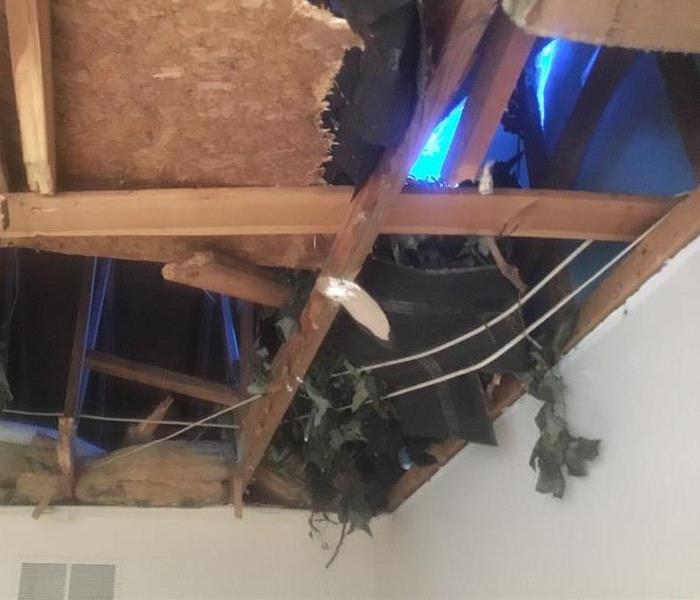 Trust SERVPRO to help in any storm situation!
Trust SERVPRO to help in any storm situation!
Are You Ready for a Flood?
Hurricane season is in full force right now. This season we have already had two hurricanes hit our coastline at the same time. Texas and Louisiana both were ravaged head-on but both these storms continued into the states bringing a lot of rain. Many times when moments like this occur, our cities and towns are able to handle the onslaught of rain due to the fact it may not be typical to get so much in such a little time. Being only at the beginning of the hurricane season, we thought it is important to make sure to share some flood preparedness tips with you. Below are some tips which were provided by FEMA (Federal Emergency Management Agency) to help you prepare your home or business for a flood.
Before the Flood:
- Have a qualified professional elevate the furnace, water heater, and electric panel, as they are susceptible to flooding.
- Install "check valves" in sewer traps to prevent floodwater from backing up into the drains of your home or business.
- Seal walls in basements with waterproofing compounds to help avoid seepage.
During the Flood:
- Turn off all utilities at the main switches or valves if instructed to do so.
- Disconnect electrical appliances.
- Do not touch electrical equipment if you are wet or standing in water.
- Do not walk through moving water. Even six inches or moving water can make you fall.
After the Flood:
- Listen for news reports to learn if the community's water supply is safe to drink.
- Avoid floodwaters. Water may be contaminated by oil, gasoline, or raw sewage. Water may also be electrically charged.
- Stay out of any building if it is surrounded by floodwaters.
- Return home only when authorities indicate it is safe.
As always, our team at SERVPRO of Lansdale, Warminster, Blue Bell and Abington Jenkintown is part of the larger, national brand of SERVPRO Industries. Know that you can trust us to put your home or business back together, “Like it never even happened.”
When Should I Replace My Roof?
6/3/2020 (Permalink)
 Call us at 215.368.4110!
Call us at 215.368.4110!
You may be asking yourself when you should replace your roof. Maybe you live or work in an older building, and you know it will become necessary at some point. Perhaps you have seen some water stains in your attic or you have just gone through a season of really heavy weather and some shingles have disappeared. Today we are going to share some things to think about as you decide when you should replace your roof.
Gutters/Rain Spouts. Rain spouts can pull away from the building if they are overloaded or clogged with water and debris, and this can do damage to the corners of the roof and exterior walls. This kind of damage is easily seen from the ground, so take a walk around your building to see if there is any sign of this kind of damage. If the damage has been evident for a while and you haven’t done repairs, your roofing may have experienced enough damage that it needs to be replaced.
Shingles. If you see curled or buckled shingles, or if shingles are missing, that’s something that will need to be repaired right away if you are to avoid leaks and future water damages. Water stains in the attic are a telltale sign that you might need a new roof; higher-than-average energy bills are another sign that you may need a SERVPRO of Lansdale, Warminster, Blue Bell and Abington Jenkintown a call today.
Maintenance. Conducting regular inspections of all parts of your roofing will aid you when it comes to the condition of your roof. It can be easy to forget about it, but a damaged roof can quickly become a huge issue, allowing water to intrude into every part of your home or business and cause water damage.
SERVPRO of Lansdale, Warminster, Blue Bell and Abington Jenkintown is here to help you with your roofing concerns. We handle water damage, fire damage, and mold remediation, so contact us right away if you have experienced any of these issues. Water damage can be from a roof that needs to be replaced, or it can cause you to need to replace it; we can help you in every roofing situation!
Managing Flood Damage in Your Business
6/3/2020 (Permalink)
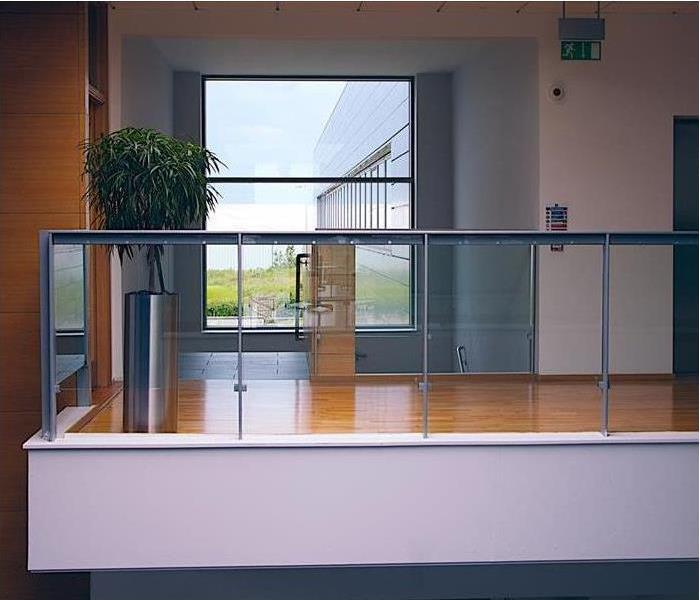 We know the importance of getting your business back up and running quickly. Give us a call at 215.368,4110!
We know the importance of getting your business back up and running quickly. Give us a call at 215.368,4110!
During storm season here in the Philadelphia area your business may experience some damage from flooding. Here are some tips you can follow to manage flood damage in your business:
Safety First!
- Do not enter the building until a professional has cleared it if you believe that it has been structurally damaged or if there is flood risk remains.
- Do not go anywhere near downed power lines or any standing water or metal objects near these downed wires. Stay away from damaged trees, and do not wade into floodwaters.
- Avoid using open flames, especially indoors. Keep a fire extinguisher handy.
- Once the worst has passed, assess any and all damage that the building has received. Inspect every part of the property for possible destruction, including machinery, making sure to avoid standing water or using electricity.
- Do not climb onto your roof unless the building has been deemed structurally sound, and practice precaution when climbing and working on ladders.
- If using a chainsaw to cut fallen or damaged trees or branches, take precautions to ensure they do not cause any more damage when they fall.
- Remove any wet material, such as rugs or carpets, and properly dry them out to prevent mold from establishing itself. Dry your premises by opening windows and doors; it can be helpful to have fans running if it can be done safely.
- You are at risk for mold within the first 24-48 hours following a flood, so it is vital to remove the water as soon as possible and start remediation. Flooding poses a risk to drywall, support beams, and foundations, as well, and floodwater can also contain dangerous contaminants and sewage so it must be avoided.
- Keep track of everything that was destroyed or damaged in the storm by documenting it through photos or videos along with putting together a list of broken items. You will need this list for insurance purposes.
If your business has experienced a flooding event, contact SERVPRO of Lansdale, Warminster, Blue Bell, and Abington Jenkintown as soon as possible. Here at SERVPRO, our focus is your safety and we are here to offer our professional help for water damage, fire damage, and mold remediation. We have years of experience in these areas and we are happy to help.
How to Protect your Home or Business in a Flood Zone
4/16/2020 (Permalink)
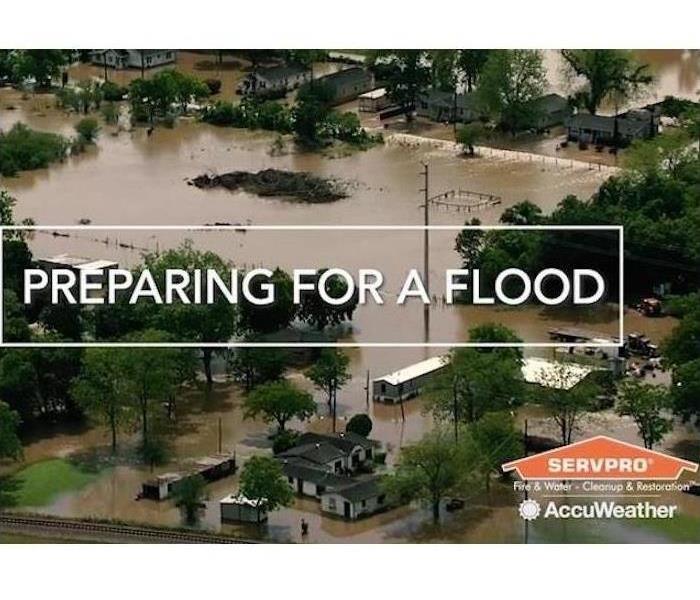 If your home or business has recently suffered from storm or flood damage, then contact SERVPRO of Warminster, Lansdale, and Blue Bell at 215.368.4110
If your home or business has recently suffered from storm or flood damage, then contact SERVPRO of Warminster, Lansdale, and Blue Bell at 215.368.4110
Each year homeowners face the possibility of flooding, whether it’s from a heavy rain storm or a burst piping. It’s important to stay prepared & to protect your property if you live in or work near a flood zone. Although you can’t completely stop a flood, you can minimize the impact that water has on your property. Below are a few steps you can do to help keep water from invading or destroying your property.
Have a Plan
The best thing you can do if you think you live in a flood zone is to have a plan of action in advance. Here is a list of things to consider:
- Store all important documents in a watertight secure container.
- Have a separate lockbox for jewelry & any other valuables.
- Contact your marketing representative at SERVPRO of Woodland Hills in advance and set up an Emergency Ready Plan for protecting your home & getting a quick service response after a flood.
Invest in Sandbags & Flood Barriers
Let’s face it, some homes are more susceptible to water damage. Lower flood water, however, can be contained by simply laying out sandbags & setting up flood barriers around your doors. Even if some water manages to get, sandbags & flood barriers can reduce the water damage & can save you thousands of dollars in repairs.
Rethink Your Home’s Construction
If you are building a new home or renovating your current one, then invest in components that are waterproof or create a tighter seal around the structure. Some of these include:
- Concrete flooring instead of wooden floorboards
- One-way valves in your plumbing to prevent water backup in the plumbing system
- Waterproof all of your electrical outlets
- Cement render & lime plaster
- Water resistant window & door frames
- Flood skirts around brick homes
Why SERVPRO in a Storm Situation?
4/16/2020 (Permalink)
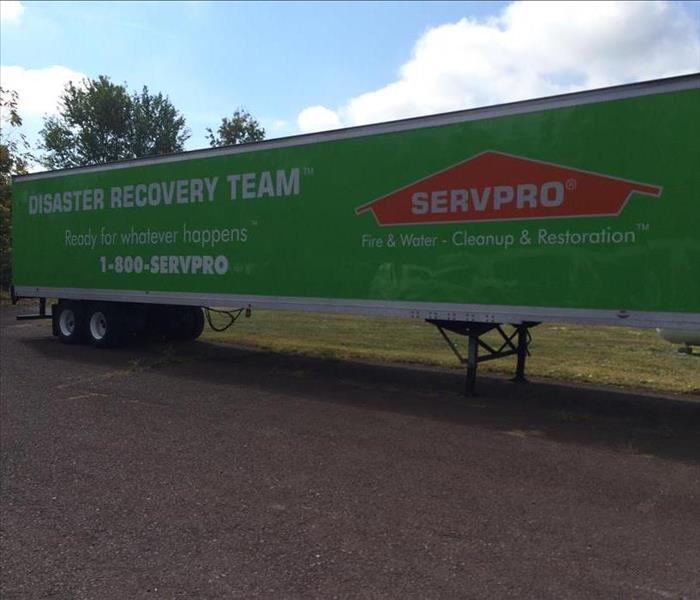 We are well equipped to handle any size disaster! Call us at 215-368-4110!
We are well equipped to handle any size disaster! Call us at 215-368-4110!
By calling us you will have peace of mind knowing that SERVPRO of Lansdale, Warminster, and Blue Bell has taken care of everything that’s affected by flooding during this storm season. If you choose SERVPRO to restore your property your personal items and real property will be treated with care and concern.
Water damaged belongings are dried to prevent damage and mold growth. While the cost is the reason why the majority of people will try doing it on their own, people usually save money through hiring professionals like us.
If you evaluate your time, the extra work to dry your contents and consider the damage’s extent, you'll see that choosing a professional is the right choice. Once you surmise that it’s too much for you to handle, choose to work with the professionals at SERVPRO who can extract water properly and quickly and get you back to normal after a flood.
What To Do When Your Home Floods
4/9/2020 (Permalink)
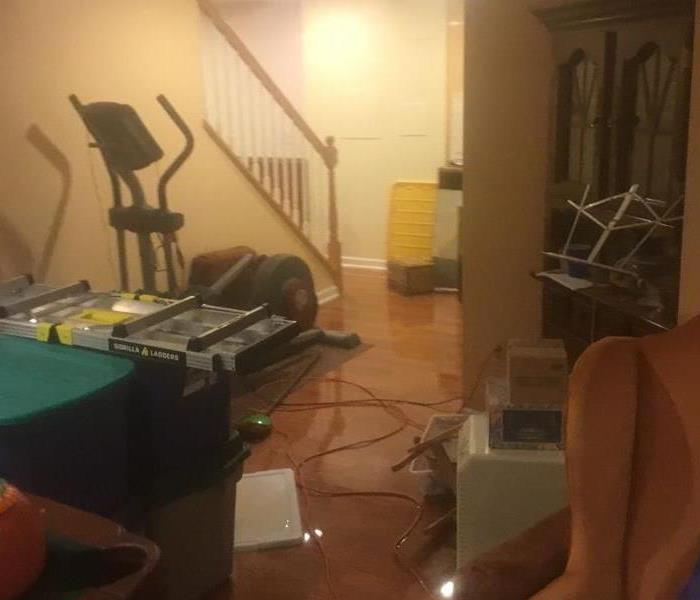 Call us at 215.368.4110
Call us at 215.368.4110
If your home has been flooded, the proper steps need to be taken to ensure the safety of your family along with the integrity of the structure. If the levels of flooding are not severe, here are the steps to follow so your house can get back to normal in no time. If the flooding is severe, make sure to bring in the professionals to handle the issue.
Here are some steps to take if your house is flooded:
- Evacuate everyone from the premises as soon as possible once the flooding starts. Find a dry, safe spot away from the house while waiting for the flooding to stop. If flooding is caused by a natural disaster, call the authorities or listen to the local news to find a temporary shelter and relocate to that shelter when possible. Call 911 if anyone needs medical attention and make sure that everyone is accounted for and safe.
- Attempt to find the source of the flooding if it is not from a natural disaster. Stop it at the source, try to turn it off any faucet or seal it up; turning off the main water valve may also solve the issue.
- Turn off the electricity, but do not attempt to reach the fuse box if you have to walk through water to reach it! If you cannot reach the fuse box without stepping in water, call an electrician.
- Document all the damage by taking photos and videos of all the affected areas. This information will be necessary for insurance purposes if you need to file a claim.
Next comes the clean-up process:
- Do not touch the water without the proper equipment, as it may be contaminated with sewage or other hazardous material. If you have to enter the establishment wear waders or waterproof boots.
- All of the water must be removed, and then a wet vacuum or a pump can be used to dispose of any standing water.
- Attempt to salvage any items that were not seriously damaged. Do not eat any food that has been contaminated by floodwater.
- If the water damage is not too bad, dry the space out with fans and dehumidifiers. Anything that was touched by the water also needs to be disinfected.
Warm, wet spaces are an attractive breeding ground for mold colonies, so act as quickly as possible to prevent mold growth.
- Your property needs to be as dry as possible to prevent mold spores from growing. Once a mold colony gets established it is not possible to remove completely. Keep the affected areas as dry as possible and treat them with a strong cleaner, such as a bleach solution.
- Open any windows and doors to let fresh, dry air in and circulate.
If the damage to your home is critical and you doubt you are capable of fixing the issue by yourself, don’t hesitate to call us to assist you in getting your house back to normal. Here at SERVPRO of Lansdale, Warminster, and Blue Bell we are experts when it comes to water damage repair and restoration, and we are mold prevention and remediation pros, too.
Steps To Take if Your Power Goes Out During A Storm
2/3/2020 (Permalink)
 Call SERVPRO of Lansdale, Warminster, and Blue Bell the next time there is a storm event in our area! We're happy to help!
Call SERVPRO of Lansdale, Warminster, and Blue Bell the next time there is a storm event in our area! We're happy to help!
A power outage is not that unusual during stormy weather, so it’s always a good idea to be prepared. We’re going to share some steps with you today that can help you keep your premises warm and safe when bad weather blows into town.
Keep Warm. If you have enough advance notice, heat your building really well and guard those higher temperatures ahead of the storm’s arrival so that your interiors stay warm longer if the power goes out. Make sure to use your fireplace or wood-burning stove if available. You may want to stockpile thick blankets, pillows, and heavy clothing just in case this event requires everyone to stay put for a while. A blizzard or heavy weather that causes flooding can create this kind of situation easily.
Charge Devices. Keep all cell phones, iPads, and laptops plugged in so that they are fully charged if you lose power. This step will guard your ability to get important information about the conditions in your area and enable you to contact emergency personnel if necessary.
Recharging with Vehicles. Cars and trucks can be used to recharge cell phones if those batteries start to die. Ensure that the vehicles are not running in enclosed spaces to avoid carbon monoxide poisoning.
Landlines. You may want to consider installing a landline ahead of seasonal bad weather. A cordless phone won’t work if the power goes out, while a corded landline draws power from the line itself and so is more reliable under these circumstances.
Don’t Call. Working cell towers may be overloaded by others in the affected area calling to check in on each other or using the internet. Cell phone providers recommend text messaging rather than calling during a disaster, since text messages use much less network capacity or battery power. Getting on social media platforms for information might be tempting, but if possible, try to keep usage brief and use the phone's apps rather than web browsers to minimize network use and battery drain.
Battery-Powered Radios. If you have access to a battery-powered radio or car radio, use these to get your news updates rather than taxing the wireless network and your phone battery.
The team here at SERVPRO of Lansdale, Warminster, and Blue Bell is ready to help if you have experienced damage from fire or flooding. We are large-scale cleanup experts, but we handle restorations of all sizes.
Technology Helping with Storms
10/3/2019 (Permalink)
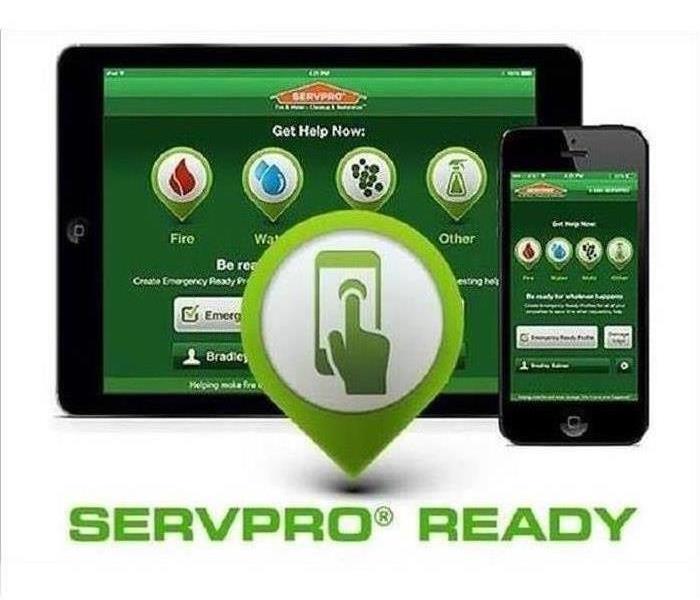 Free ERP for your business or home!
Free ERP for your business or home!
These days, it is important to be ready for a storm and disaster can strike at a moment’s notice! Technology working hard to let us be aware of danger with more time to prepare before it hits! Technology can also be a vital tool in preparing for emergencies or disasters, as well as during or after to stay informed of the situation and in communication with others. From common technology you already use on a day-to-day basis to taking a few extra steps to prepare. Below are a few things that will help you be ready in the event of an emergency or disaster.
Store Information Online
There are many places to store important information securely online. Services like Google Drive and Dropbox offer a free way to store different types of files, from a Word document to images of important documents. Ready.gov suggests saving an electronic version of insurance policies, identification documents, medical records, and information on your pets, if necessary.
Follow the News
Stay informed by following agencies such as FEMA, local news channels, and local government on Twitter for the most up-to-date information in a disaster situation. You can also alert first responders if a rescue is needed through Twitter.
Mark Yourself Safe
The American Red Cross offers a Safe & Well check-in site to list yourself as safe or find family and friends in situations where communication is difficult to establish. Facebook also has a feature called Safety Check that is activated after natural disasters or a crisis. You will receive a notification from Facebook if you’re located in the affected area at that time.
Get in Touch
Make sure your contact information is up-to-date in your phone and e-mail for communication with family, friends, business contacts, and others whom you may need to get in contact with before, during, or after a disaster.
Charge Up
Keep a portable charger in your car and home in case of an emergency. You may need to recharge this from time to time, but you can also buy solar-powered chargers as well. Get an Emergency READY Profile®SERVPRO® of Birmingham is proud to offer Emergency READY Profiles® (ERP) for free at ready.SERVPRO.com to help prepares you, your property, or your business for an emergency.By developing a SERVPRO® Emergency READY Profile® for your property or business, you minimize business interruption by having an immediate plan of action. Knowing what to do and what to expect in advance is the key to timely mitigation and can help minimize how water and fire damage can affect your property or business. Put help in the palm of your hand with the Ready Plan App. Get in touch with SERVPRO® of Lansdale, Warminster, and Blue Bell today for more information on developing an ERP for your property or business!
Are You Prepared for a Power Outage?
10/1/2019 (Permalink)
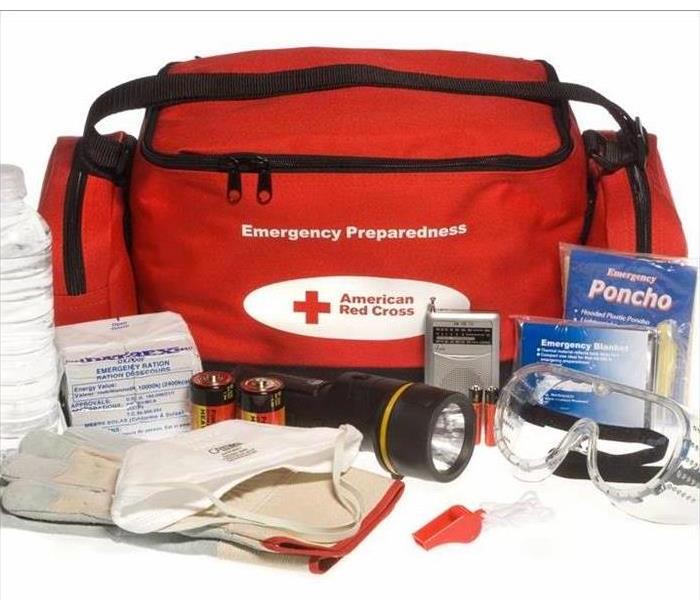 Ready Kit
Ready Kit
You may need to survive on your own after an emergency. This means having your own food, water and other supplies in sufficient quantity to last for at least 72 hours. Local officials and relief workers will be on the scene after a disaster but they cannot reach everyone immediately. You could get help in hours or it might take days. Depending on the nature of the disaster road conditions may prevent help from arriving in a timely manner.
Additionally, basic services such as electricity, gas, water, sewage treatment and telephones may be cut off for days or even a week, or longer. Your supplies kit should contain items to help you manage during these outages. If the power goes out keep your pipes from freezing by shutting off the valve that allows water to come into your home. Then, open any drain valves and all faucets and let them run until the pipes are empty (it's helpful to identify these valves in advance). Next, flush all toilets and pour denatured alcohol into toilets and sinks to prevent water in the traps from freezing. Do NOT use automotive antifreeze in case there's trouble with your water system; you don't want the antifreeze to contaminate your drinking water. You may, however, use nontoxic antifreeze that's made for winterizing motor homes.
Be prepared for a power outage by keeping necessary items centrally located in your home. Take the time to ensure that everyone in your family is aware of the "kit." Periodically check your kit to see that batteries operate properly. The following is a list of items that are suggested to keep on hand:
1. Flashlights for each family member
2. Battery-operated radio and clock
3. Extra batteries
4. Containers of bottled water
5. Canned, freeze-dried or dehydrated food, powdered milk, baby supplies for infants
6. Non-electric can opener
7. List of important phone numbers
8. First-aid kit
Following a disaster, there may be power outages that could last for several days. Stock canned foods, dry mixes and other staples that do not require refrigeration, cooking, water or special preparation. Be sure to include a manual can opener and eating utensils. The following items are suggested when selecting emergency food supplies. You may already have many of these on hand.
•Store at least a three-day supply of non-perishable food.
•Choose foods your family will eat.
•Remember any special dietary needs.
•Avoid foods that will make you thirsty.
•Choose salt-free crackers, whole grain cereals and canned foods with high liquid content.
•Ready-to-eat canned meats, fruits, vegetables and a can opener
•Protein or fruit bars
•Dry cereal or granola
•Peanut butter
•Dried fruit
•Nuts
•Crackers
•Canned juices
•Non-perishable pasteurized milk
•High energy foods
•Vitamins
•Food for infants
•Comfort/stress foods
These and many other helpful tips are available at ready.gov Here is the link to winter tips for before during and after a winter storm http://www.ready.gov/winter-weather When winter weather strikes the Philadelphia area knowing what to do until SERVPRO of Lansdale, Warminster, and Blue Bell arrives will make a difference. Call us directly at 215-368-4110
Tornado's
6/27/2019 (Permalink)
Tornadoes are created out of powerful thunderstorms and can cause fatalities and devastation in seconds. They are rotating, funnel-shaped clouds that extend from the thunderstorm itself down to the ground, and generally occur near the trailing edge of the storm. Winds from a tornado have been known to reach 300 miles per hour and can be obscured by rain or low-hanging clouds, developing so rapidly that advance warning is often almost impossible.
A tornado watch means that the present weather conditions are favorable for violent weather. Keep an eye out for these danger signs:
• Dark and greenish sky
• Large, dark, and low-lying clouds
• Hail
• Loud roar, often described as sounding like a passing train
A tornado warning means that a tornado has been spotted on the ground, or indicated by radar, and you will need to take cover immediately:
• Go to the lowest, most interior area of your home or business immediately, putting as many walls between yourself and the outdoors as you can.
• Stay away from windows, and do not open them.
• Use your arms to protect your head, or cover yourself with a mattress or sleeping bag/pillow.
• Remember where very heavy objects are on the floor above, and stay away from the area directly beneath, in case they fall through.
If you are in a mobile home, evacuate immediately. At school or work, you will need to follow the established drills to protect yourself. In an office building, go to an enclosed and windowless area near the center, away from glass and on the lowest floor possible. Make sure you stay off of elevators, as you could become trapped. Never try to out-drive a tornado; if you are caught in your car, get out of it and go to the nearest building. If you can’t get out, stay in the car with the seat belt on, and put your head down below the windows, covering your head with your hands, coat, or any other cushion. If you can safely get to an area that is much lower than the roadway, leave your car and lie down in that area, covering your head with your hands.
It is important to have a tornado safety plan in place at your home or office, letting your workforce and family know where to quickly take shelter.
When it comes to damages to your home or business by a tornado, hurricane or other severe weather, remember that the team here at SERVPRO of Lansdale, Warminster, and Blue Bell is here to help, 24 hours a day, 7 days a week. If you need us, we will be there right away.
Preparing for a Flood in your Business
6/11/2019 (Permalink)
You know that flooding, fire, and extreme weather can happen to a business at any time, and the structures and contents can easily be negatively affected. Staff can become injured or find themselves in dangerous situations, and these are scenarios you will want to be able to prevent or be ready for. You probably have an emergency preparedness plan in place, but when is the last time you looked it over? Updating your business emergency plan is a smart thing to do on a regular basis so that you will always be prepared:
• PROACTIVE MAINTENANCE. Make sure that all areas around your buildings are kept free from flammable materials and that landscaping is trimmed well on a regular basis to prevent fires from spreading if they occur. If you have replaced doors or windows lately, don’t just assume that they are properly sealed. Parking and entrance/exit areas need to always be clear and safe, in case of a disaster. Your emergency plan should include steps that need to be taken ahead of time that will lessen the effect a disaster could have. If there is heavy rainfall during inclement weather, or if the building is near a body of water such as a lake or river, low-lying spaces are going to be in danger. Keeping these areas in good repair before a flooding event occurs will go a long way towards avoiding bigger issues.
• EVACUATION INFORMATION. State law requires that you post an evacuation plan in a visible place for your staff and customers, and this needs to be up-to-date, with any floor plan or grounds changes noted. Make sure that your employees understand it and know how to carefully guide clientele to safe areas should a disaster occur.
• CURRENT CONTACT INFORMATION. Update your phone and email contact info monthly, so that all employees can be effectively alerted to important information whether they are at work or at home, should a disaster event occur.
Our team here at SERVPRO of Lansdale, Warminster, and Blue Bell are ready to help with water and fire damage, and we are proud to be mold remediation experts. Our professional damage restoration company is an important and welcome resource during tough times; we are able to complete all necessary repairs in a timely and efficient manner as well as keep you and your workforce out of harm’s way.
Storm Damage Prevention for Spring
4/24/2019 (Permalink)
In South Eastern PA, spring is very welcome. After all the gloomy, cold days and nights, it’s great to see the sun again. The surrounding fields are green, and flowers are everywhere! We are all anxious to get outside and have some fun.
Spring also brings with it some stormy weather, so you will want to be prepared for that. Damages to your home and other properties can make you forget the joy that this season brings with it, so let’s talk about some Spring storm damage prevention tips:
Landscaping. A thorough cleaning of your landscaping for your home or business is in order after harsh winter weather. Some plants and trees will have suffered, and some may not have made it at all. Removing dead branches and trees or other large vegetation will prevent damages in a storm from flying debris.
Drainage. Make sure your property enjoys proper drainage; often the ditch system will be full of leaves, branches, and other debris from the winter, and when water starts running, this can present a problem. Floods, even small ones, are very damaging to your property and can become dangerous very quickly.
Roofing. Have a thorough inspection done of your roofing. Loose shingles, cracks, or damage from excessive moisture made by melting snow or ice can weaken your roof’s ability to keep water out. Make these repairs right away; if you need a new roof, don’t put it off!
Doors and windows. Take a good look at all exterior doors and windows to make sure they are in good repair and fit properly. Are they well-sealed against the coming wet weather of Spring? Did they sustain damages from winter? If so, schedule repairs soon before spring storms come.
Gutters. Be sure to have your rain gutters cleaned out to prevent damages to your building through spilling water. When debris and dirt clog your gutters, the water simply has nowhere to go but into your walls when it backs up. Waterlogged walls are a great place for mold to start a colony, and that is certainly something you will want to prevent!
Here at SERVPRO of Lansdale, Warminster, and Blue Bell, we are always ready to help in the event you suffer from Spring storm damages. We handle all sizes of fire or water damage events, and we are experts when it comes to mold and its remediation and prevention.
Storm damage can cause a moldy situation
4/22/2019 (Permalink)
Mold spores are all around us, so there’s the potential for mold to turn up anywhere on your property, at any time. The bad news is that you can’t truly remove black mold, but mold remediation is the next best thing. Never heard of it? Read on to understand what it means and how it can help your property get back on track.
What Is Mold?
Mold is best described as a type of fungus made up of small organisms. These organisms are found everywhere, thanks to the lightweight, airborne spores they use to reproduce. Believe it or not, mold is only a problem when it finds a moist area in building and starts to grow. Some of mold’s favorite spots in which to grow include:
• Attics
• Crawlspaces
• Damp basements
• Bathrooms
As mentioned before, because mold spores are so numerous and moveable, you’ll never truly get rid of all of them and their potential to replicate. But mold cleanup via remediation presents the next best thing.
What Is Mold Remediation?
Rather than trying to eradicate mold, remediation is centered on resetting mold levels to lower levels where it isn’t likely to reproduce. It’s important to understand that while the remediation concept sounds simple, it’s a multi-step process best left to experts. Those experts will:
• Inspect your property to assess black mold damage
• Take steps to contain the mold
• Filter your air
• Remove visible mold
• Clean walls, furniture, etc.
Remediators will also help you understand the source of moisture feeding the mold - a critical step in ensuring that your mold problems won’t be back anytime soon.
Many businesses have learned the hard way that black mold can be a big hassle. It can create musty, unpleasant odors at best and completely ravage your property at worst. While you can’t remove it, remediation is your best option. If your property suffers a water damage from a storm be sure to call the professionals at SERVPRO of Lansdale, Warminster, and Blue Bell to tryout the structure properly so that mold will not grow.
The Difference Between Storm Watch and Storm Warning
4/18/2019 (Permalink)
The labels of "storm watch" and "storm warning" are used year-round and in different situations across the country. Knowing the difference between a watch and warning — and what actions you should take when they're issued — can help you and your family take appropriate precautions and stay safe.
National Weather Service alerts
The National Weather Service (NWS) keeps an eye on forecasts and climate data around the country. When it detects a potentially serious weather pattern, the NWS will notify local meteorologists in the area. Since you may not always be near a radio or television, you can stay up-to-date on weather changes by following your local news stations on social media, downloading the NWS app or signing up for text alerts from the NWS.
When you hear news that a storm watch or storm warning has been issued, keep in mind that the term being used describes both the immediacy and level of force of the storm.
What does "storm watch" mean?
A storm watch means that severe weather hasn't occurred yet, but upcoming weather conditions are expected to produce potentially dangerous weather, such as heavy rain, hail or strong gusts of wind. Because conditions can change quickly, the NWS wants to give you as much time as possible to safeguard your personal property and take shelter.
What does "storm warning" mean?
A storm warning indicates that meteorologists have already observed severe conditions. If you hear that a storm warning has been issued, it means potentially dangerous weather is imminent in or near your location. Depending on the type of weather warning, take appropriate action as quickly and safely as possible.
Types of storm watches and warnings
• Severe Thunderstorms. A thunderstorm watch, which can be in effect for several hours, means weather conditions exist where severe thunderstorms can easily develop. A thunderstorm warning means current storm conditions can turn worse, including heavy rain and strong winds. Whether a watch or a warning, it's best to stay inside and away from windows.
• Tornadoes. April, May and June are the most active months of the year for tornadoes to occur. A tornado watch means severe weather, such as large hail or winds over 58 mph, has the potential to turn into tornadic activity. A tornado warning indicates that either a strong weather rotation could produce a tornado at any moment or that a funnel cloud has already been spotted. In either situation, you should seek shelterimmediately and pay attention to local news updates.
• Flash Floods. A flash flood watch signals that even if there isn't any standing water in your immediate area, you should be ready for those conditions to change at any moment. Flash flood watches can turn to warnings quickly, meaning that flooding of nearby bodies of water is imminent or already happening. In either case, move to higher ground as safely as possible, and stay out of the flood's path — for instance, don't try to drive your vehicle through large areas of pooling water.
• Tropical Storms. The NWS tries to issue tropical storm watches as early as possible to allow enough time for emergency prep, including the possibility of evacuation. If you hear a warning, though, a tropical storm is expected within the next 36 hours, and you should take shelter immediately.
• Hurricanes. Whether there is a tropical storm expected to strengthen into a hurricane, or one that's already formed, a watch means a hurricane has the potential to impact your area. You should gather emergency supplies and be prepared to act quickly. Warnings are typically issued up to three days in advance — if one is issued, take direction from local authorities on whether to take shelter or to leave the area immediately.
• Winter Storm. A winter storm watch is usually issued at least 24 hours in advance of the storm. It lets you know that while hazardous weather conditions are likely, the exact areas and timing may not be known yet. If a watch is upgraded to a winter storm warning, try to avoid traveling, as visibility and road conditions can become unsafe.
No matter the type of watches or warnings that may come your way, it's important to properly prepare for storm conditions in advance. Also, be sure to review your policies with your insurance agent so you know what's covered in case of storm damage.
via LinkedIN
Storm Damage to your Property
5/30/2018 (Permalink)
Dealing with repairs and insurance companies after severe weather hits your property can be difficult. Homeowners can use the following tips to help tackle the storm damage caused by hard rains, flooding, or storm-related issues.
SAFETY FIRST
If you and your family were away from home when the storm hit, do not return until it has been confirmed safe. Contact a storm damage expert like SERVPRO of Lansdale; we’ll help you determine if your home is safe to return to.
INSURANCE
You will need to contact your homeowners’ insurance adjuster as soon as possible. If your neighborhood has sustained widespread damage, find out if any special teams of insurance agents, relief workers, or contractors are coming to the area. Check your policy to find out what actions you need to take or talk to your agent to make sure you are following the proper procedures. Not following these actions correctly could result in a reduced claim. Inspect your property and make a list of all damages; take photographs of all noted damage if at all possible.
RECORDING AND DOCUMENTING
Document your neighbor’s damages, as well; this can prevent the insurance provider from downgrading your claim by saying the damage is from your neglect of maintenance or other unrelated issues by giving them a way to compare. Keep a record of all the communication you have with your insurance provider, and don’t do any unnecessary repair work yourself. Hire a trusted storm damage restoration service provider such as SERVPRO of Lansdale to handle any repairs.
BE SCAM FREE
Always check the adjuster’s identification. If you are evacuated, ask for money from your claim upfront. If they agree, you will be given a check for an amount that will be deducted from your final settlement. Some providers will automatically offer a partial payment early on during the process. Review it carefully and decline it if you feel uncomfortable with any part of it. Never be afraid to ask questions and to expect an answer that makes sense or seems fair.
Dealing with a storm's aftermath is stressful, but reacting properly will be an immense help and can prevent problems down the road.
The SERVPRO of Lansdale Team is ready to help 24/7. Call us for your fire or water damage issues at 215-368-4110.
courtesy of LinkedIn
Storm Causes Fallen Tree in Hatfield
4/23/2017 (Permalink)
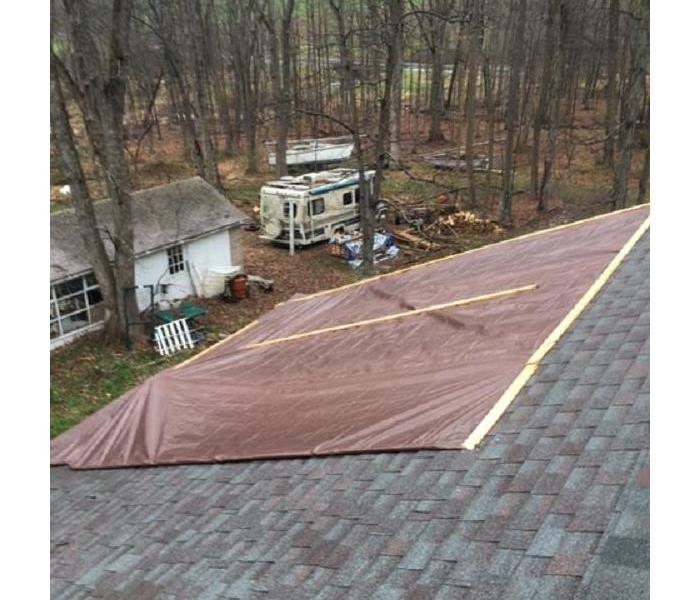 Fallen tree caused damage to the roof. A temporary tarp can help to prevent further interior damage to the home.
Fallen tree caused damage to the roof. A temporary tarp can help to prevent further interior damage to the home.
SERVPRO of Lansdale specializes in storm and flood damage restoration. Our crews are highly trained and we use specialized equipment to restore your property to its pre-storm condition. This includes emergency tarp and board up services.
Faster Response
Since we are locally owned and operated, we are able to respond quicker with the right resources, which is extremely important. A fast response lessens the damage, limits further damage, and reduces the restoration cost.
Resources to Handle Floods and Storms
When storms hit Hatfield, we can scale our resources to handle a large storm or flooding disaster. We can access equipment and personnel from a network of 1,650 Franchises across the country and elite Disaster Recovery Teams that are strategically located throughout the United States.
Have Storm or Flood Damage? Call Us Today 215-368-4110






 24/7 Emergency Service
24/7 Emergency Service
























